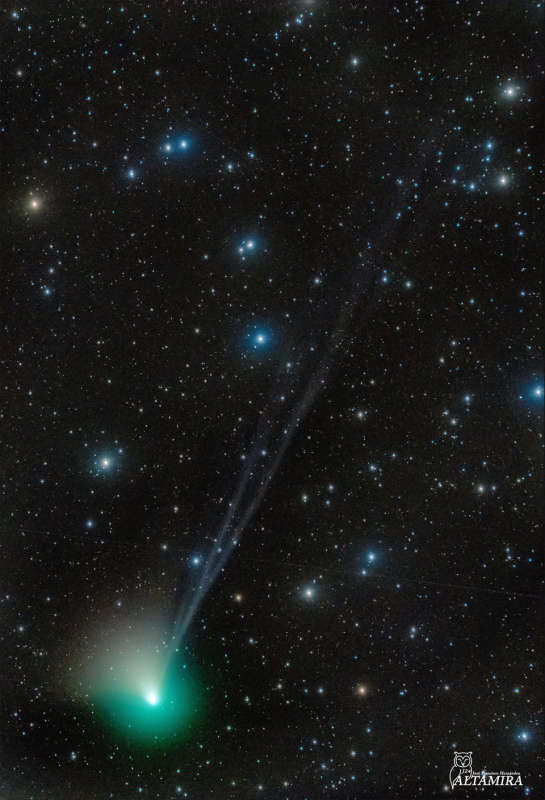Credit & Copyright: Jose Francisco Hernцndez
Explanation:
Comet ZTF may become visible to the unaided eye.
Discovered early last year,
this massive snowball
has been brightening as it approaches the Sun and the Earth.
C/2022 E3 (ZTF)
will be closest to the Sun later this week,
at which time it
may
become visible even without binoculars
to northern observers with a clear and dark sky.
As they near the Sun, comet brightnesses are
notoriously hard to predict, though.
In the featured image taken last week in front of a
picturesque star field, three blue
ion tails extend to the upper right, likely the result of a variable
solar wind on
ions ejected by the icy
comet nucleus.
The comet's white
dust tail is
visible to the upper left and much shorter.
The green glow is the comet's coma, caused by glowing carbon gas.
Comet ZTF is expected to pass nearest
the Earth in early February, after which it should dim dramatically.
Discovery + Outreach:
Graduate student research position open for APOD
1999 2000 2001 2002 2003 2004 2005 2006 2007 2008 2009 2010 2011 2012 2013 2014 2015 2016 2017 2018 2019 2020 2021 2022 2023 2024 2025 |
Январь Февраль Март Апрель Май Июнь Июль Август Сентябрь Октябрь Ноябрь Декабрь |
NASA Web Site Statements, Warnings, and Disclaimers
NASA Official: Jay Norris. Specific rights apply.
A service of: LHEA at NASA / GSFC
& Michigan Tech. U.
|
Публикации с ключевыми словами:
comet tail - кометные хвосты
Публикации со словами: comet tail - кометные хвосты | |
См. также:
Все публикации на ту же тему >> | |
